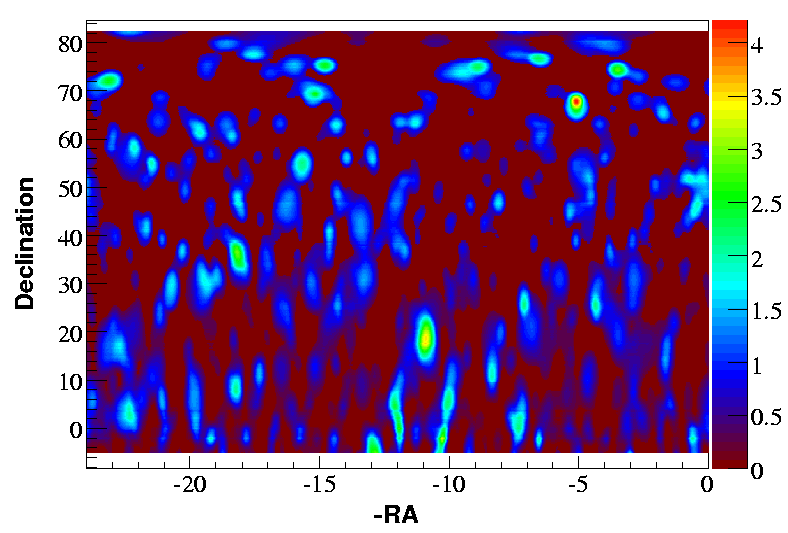2006 AMANDA Point Source Analysis
Event Selection
Methodology, Sensitivity & Discovery Potential
Unblinding Proposal
Results
Questions and Answers
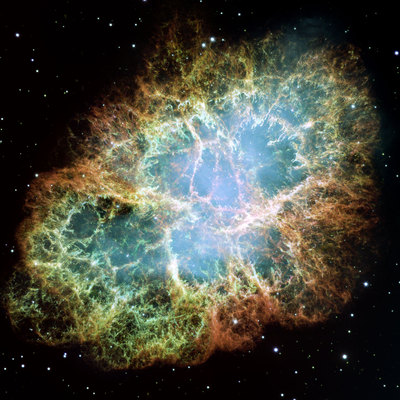 |
| NASA/ESA Hubble |
Methodology, Sensitivity & Discovery Potential
Methodology
The proposed search method for 2006 is nearly identical to the unbinned search used in 2005, with three significant differences:The zenith range of events accepted into the likelihood analysis is widened to ±8o of the potential source location
This captures a small portion of signal rejected with the ±5o range used in 2005. A fit is done on the zenith distribution within the band to determine the background at the center.Paraboloid errors are used rather than assuming a Gaussian PSF
The paraboloid ellipse is described by two axes and a rotation angle of the major axis. A bug was recently found in Sieglinde which caused the rotation angle to be incorrect for 50% of events, thus reducing the apparent effectiveness of using the paraboloid errors in my previous study. In this analysis, the errors are used similarly to the IC-9 analysis, where the event uncertainty is assumed to be circular with error given by Error = sqrt(σ1*σ2). This technique avoids the above problem and is slightly better than the method used in 2005.A spectral index penalty is applied, improving discovery potential for almost all reasonable spectral indices
Astrophysical sources of neutrinos should not have the extreme spectral indices allowed in the 2005 analysis. Azriel G. pointed out that allowing extreme spectral indices, such as E-1.0 or E-3.5, effectively reduces discovery potential by allowing randomized background to reach higher likelihood values. One solution is to fix the spectral index to 2.0; however, real neutrino spectra may be softer than 2.0. The solution used in this analysis, after discussion with Gary H., is to assume astrophysical neutrinos have spectral indices between 2.0-2.7 and apply a penalty to either side of this range reflecting our disbelief. The penalty function is shown below: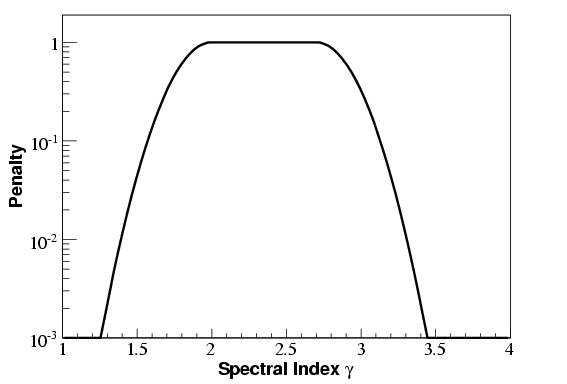
The penalty is applied during the minimization of -log(likelihood) and forces the estimated spectral index closer to the 2.0-2.7 unpenalized range. Application of this penalty enhances discovery potential by ~5% for E-2 spectra.
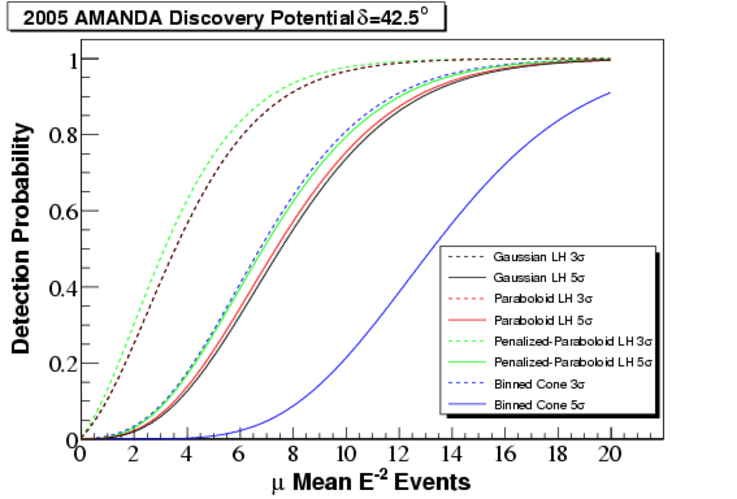
Plotted below is the poisson mean number of events needed to achieve 50% CL discovery potential at 42.5o for the penalized and unpenalized likelihood searches along with the likelihood search without using Nch information. Randomized data from 2006 is used as background.
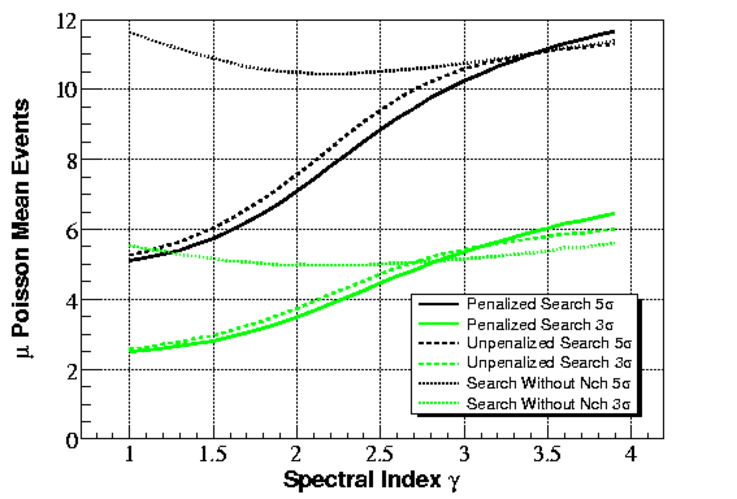
The penalized search improves discovery potential for spectral indices less than 3.2. This may be counterintuitive for spectral indices outside the range 2.0-2.7 since the penalty factor is applied. However, since the background atmospheric neutrinos have a spectral index of ~3.7, significant clusters of atmospheric neutrinos are penalized more strongly than signal neutrinos with spectral index harder than 3.2. The effect is illustrated in the plot of likelihood difference for background shown below:
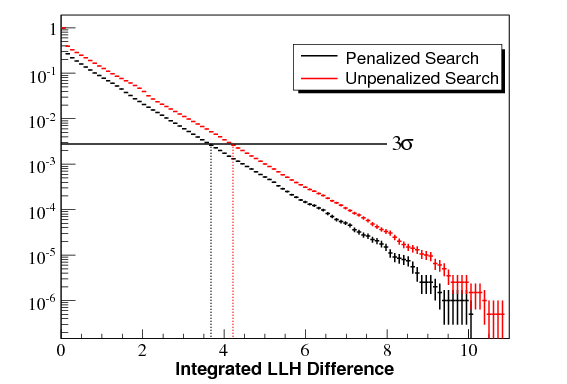
With the penalized search, the background is shifted to smaller likelihood difference values and thus a smaller likelihood difference (less signal events) is required to attain 3 sigma significance.
Application of this penalty clearly would have a negative impact on spectral index estimation since it forces the spectral index obtained from -log(likelihood) minimization closer to the 2.0 - 2.7 range. In the case where a signal is observed, the non-penalized search is used to estimate the spectral index, and the significance of this measurement is never calculated. Thus, spectral index estimation can be decoupled from evaluating significance without adding an additional trial.
Point Spread
Application of the optimization and final cuts results in the following simulated point spread for an E-2 spectrum: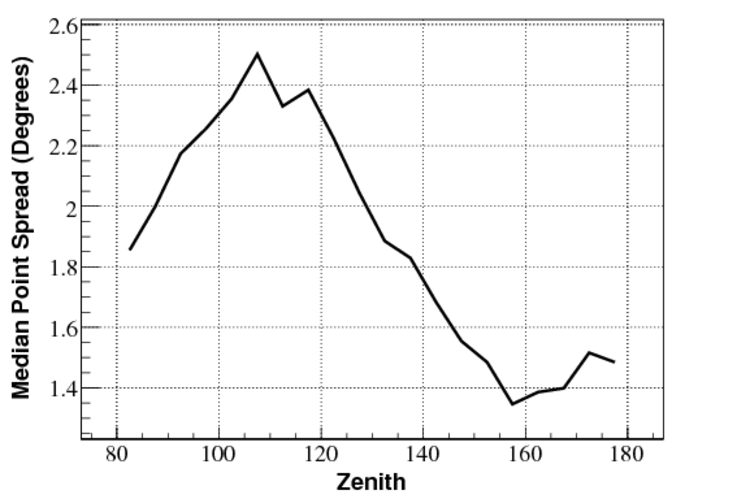
Sensitivity
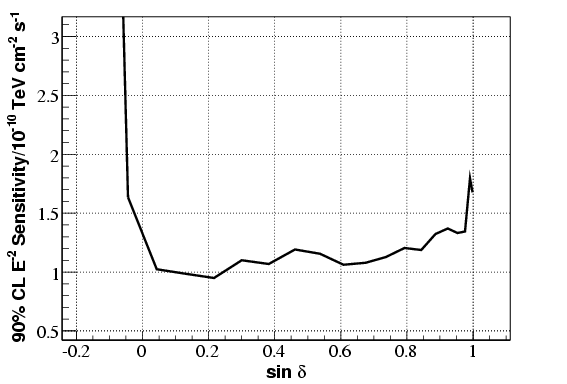
The values shown include a Data/MC normalization of 1.04.
Averaged Discovery Potential
| Statistical Power = 0.9 | Statistical Power = 0.5 |
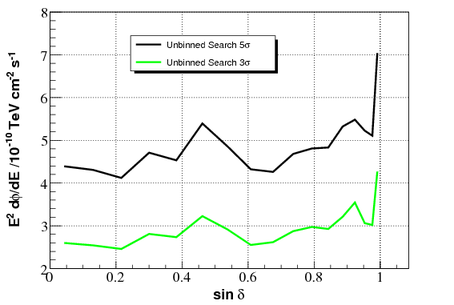 |
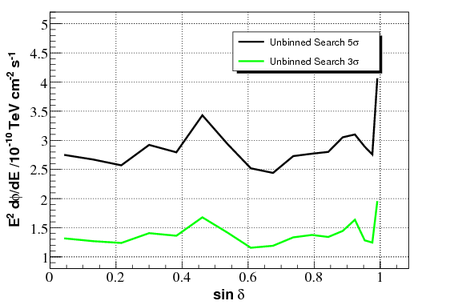 |
Randomized 2006 Unbinned Skymap (-log10(P-value))
